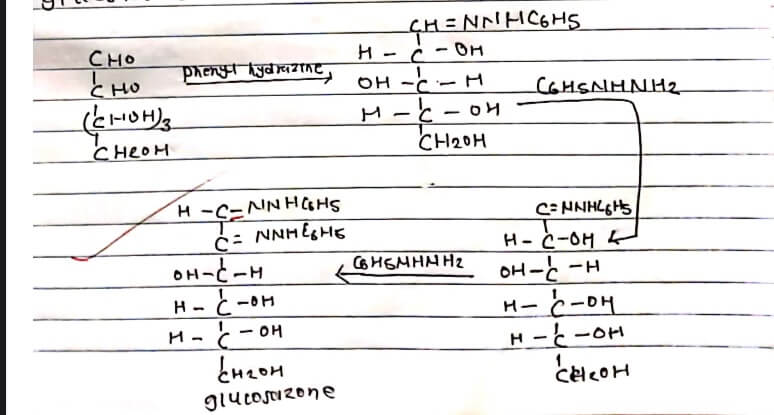APPARATUS REQUIRED:
a) Test tube
b) Test tube holder
c) Water Bath
d) Burner
e) Filter paper
f) Beaker
g) Funnel
CHEMICALS REQUIRED:
a) Glucose
b) Acetic acid
c) phenyl hydrazine
THEORY:
Glycosazone is formed by the treatment of glucose with phenylhydrazine. When glucose is treated with phenylhydrazine at first, glucose phenyl gives 101 g phenylhydrazine. This reaction with phenylhydrazine gives glucosazone.

PROCEDURE:
At first, 19m glucose was dissolved in 5 ml of water in the test tube. A solution of phenyl hydrazine 4ml, acetic acid and 8 ml phenol hydrazine was added to the above test tube. Then the test tube was kept in a water bath and boiled for 10-15 minutes and yellow ppt was observed. It was then cooled and filtered. The residue was dried to obtain yellow crystals of glucosazone.
RESULT:
Hence, from the experiment the crystals of glucosazone were obtained.
CONCLUSION:
Hence, glucosazone can be easily obtained from glucose by reacting it with phenyl hydrazine in presence of acetic aud.
PRECAUTIONS:
1) Apparatus should be handled carefully.
2) The chemical should be used in the proper amount.
Structure:

